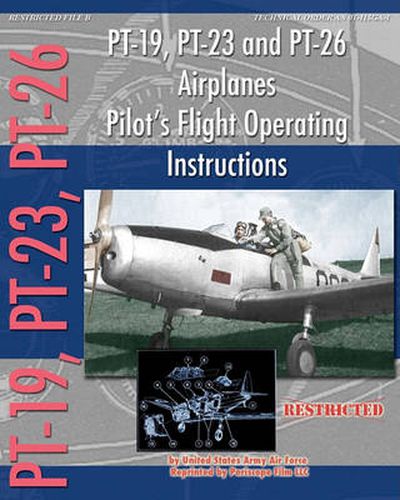Readings Newsletter
Become a Readings Member to make your shopping experience even easier.
Sign in or sign up for free!
You’re not far away from qualifying for FREE standard shipping within Australia
You’ve qualified for FREE standard shipping within Australia
The cart is loading…






This title is printed to order. This book may have been self-published. If so, we cannot guarantee the quality of the content. In the main most books will have gone through the editing process however some may not. We therefore suggest that you be aware of this before ordering this book. If in doubt check either the author or publisher’s details as we are unable to accept any returns unless they are faulty. Please contact us if you have any questions.
As late as 1940, the majority of Army Air Force trainees received flight lessons in biplanes such as the PT-17. The advent of high-performance combataircraft led the USAAF to seek a new plane for primary training, that would better simulate a modern fighter aircraft. Fairchild’s M62, a two-seat monoplane with a higher stalling speedthat required careful flying, beat out 17 competitors for the job. Designated PT-19, the rugged aircraft was produced in large quantities beginning in 1941. The basic model was equipped with a 200 hp Ranger engine, had a 36'wingspan, and could achieve 132 mph in flight. Variants included the PT-19B designed for instrument training, the PT-23 which had a 220 hp Continental radial power-plant, and the PT-26 Cornell which featured an enclosed cockpit. By war’s end PT-19s and variants were built by Fairchild, Aeronca, Howard, St. Louis Aircraft Corp. and Fleet Aircraft. The USAAF accepted over 6000 PT-19s and variants, and Cornells flew forthe air forces of Canada, Norway, Brazil, Ecuador, Chile and many other nations. This pilot’s flight handbook dates from 1943, and covers the PT-19, PT-19A, PT-19B, PT-23 and PT-26. Originally restricted, it was declassified long ago, and is reprinted here in its entirety.
$9.00 standard shipping within Australia
FREE standard shipping within Australia for orders over $100.00
Express & International shipping calculated at checkout
This title is printed to order. This book may have been self-published. If so, we cannot guarantee the quality of the content. In the main most books will have gone through the editing process however some may not. We therefore suggest that you be aware of this before ordering this book. If in doubt check either the author or publisher’s details as we are unable to accept any returns unless they are faulty. Please contact us if you have any questions.
As late as 1940, the majority of Army Air Force trainees received flight lessons in biplanes such as the PT-17. The advent of high-performance combataircraft led the USAAF to seek a new plane for primary training, that would better simulate a modern fighter aircraft. Fairchild’s M62, a two-seat monoplane with a higher stalling speedthat required careful flying, beat out 17 competitors for the job. Designated PT-19, the rugged aircraft was produced in large quantities beginning in 1941. The basic model was equipped with a 200 hp Ranger engine, had a 36'wingspan, and could achieve 132 mph in flight. Variants included the PT-19B designed for instrument training, the PT-23 which had a 220 hp Continental radial power-plant, and the PT-26 Cornell which featured an enclosed cockpit. By war’s end PT-19s and variants were built by Fairchild, Aeronca, Howard, St. Louis Aircraft Corp. and Fleet Aircraft. The USAAF accepted over 6000 PT-19s and variants, and Cornells flew forthe air forces of Canada, Norway, Brazil, Ecuador, Chile and many other nations. This pilot’s flight handbook dates from 1943, and covers the PT-19, PT-19A, PT-19B, PT-23 and PT-26. Originally restricted, it was declassified long ago, and is reprinted here in its entirety.